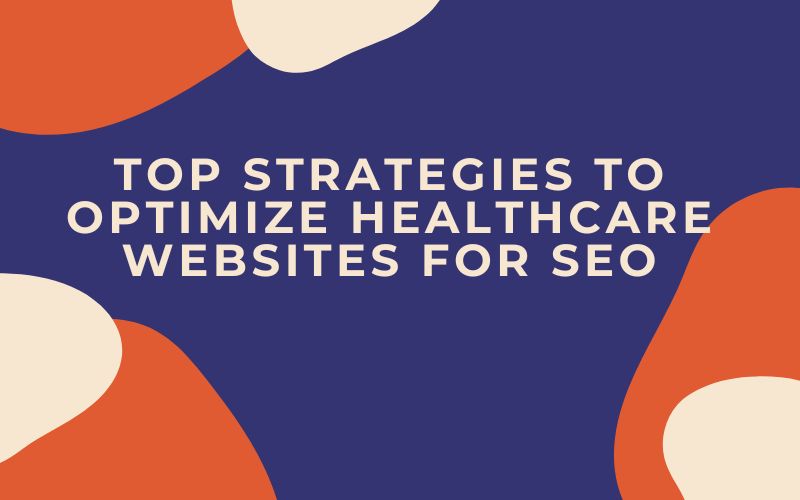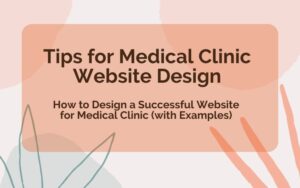The healthcare industry is becoming increasingly competitive in the digital space, and having a strong online presence is crucial for healthcare providers to attract and retain patients.
Search engine optimization (SEO) continues to be a fundamental aspect of any successful digital marketing strategy. With the evolving landscape of search algorithms and user behavior, it’s essential for healthcare websites to stay updated with the latest SEO strategies to maintain visibility and relevance in search engine results.
Explore the top strategies to optimize healthcare websites to generate more business, enhance online visibility, attract more qualified traffic, and ultimately improve patient acquisition and retention.
1. Technical SEO Optimization
Technical SEO optimization, in particular, plays a critical role in ensuring that healthcare websites rank well in search engine results pages (SERPs) and provide a seamless user experience. Here are the top technical SEO strategies to optimize healthcare websites for more organic traffic:
Fast Page Load Times
Healthcare websites must prioritize fast page load times to meet user expectations and search engine requirements. This can be achieved by optimizing server response times, implementing image compression techniques, and enabling browser caching. By improving load times, healthcare websites can enhance user experience and positively impact their search rankings.
Mobile-Responsive Design
With the continuous growth of mobile usage, implementing a mobile-responsive design is essential for healthcare websites. Ensuring that the website is optimized for various mobile devices and screen sizes is crucial for providing a seamless user experience, as well as meeting the mobile-first indexing criteria of search engines.
HTTPS Protocol and SSL Certificates
Security of data is another critical element healthcare websites must address due to the sensitive nature of the data they handle.. Implementing the HTTPS protocol and SSL certificates not only ensures data security but also contributes to improved search engine rankings. Search engines prioritize secure websites, and having SSL certificates can positively impact a healthcare website’s credibility and visibility.
Website Navigation and Structure Optimization
Optimize the navigation and structure of healthcare websites is vital for better crawlability by search engine bots. Clear and logical website navigation, along with a well-structured sitemap, aids search engines in indexing and understanding the website’s content. This optimization can improve the website’s overall visibility and accessibility in search results.
Video: 10 Essential Tips to Optimize Healthcare Websites For Search Engines
2. On-Page SEO Optimization
On-page SEO strategies are crucial for achieving prominent search engine visibility and engaging user experiences. The following on-page SEO tactics are crucial for optimizing healthcare websites for SEO.
Keyword Research
Conduct comprehensive keyword research focused on user intent (informational, navigational, transactional) is fundamental for healthcare websites. Understanding the search queries and intent of users enables the strategic integration of relevant keywords throughout the website’s content, aligning it with user needs and search engine algorithms.
Optimization of Titles, Meta Descriptions, Headings, and Body Content
Every aspect of on-page content, including titles, meta descriptions, headings, and body content, should be meticulously optimized with relevant keywords. This optimization enhances the website’s relevance to search queries and improves its visibility in search results, driving targeted organic traffic.
Creation of High-Quality, Expert-Written Content
Develop high-quality, expert-written content is pivotal for healthcare websites to establish authority and trust, in line with the E-E-A-T (Experience, Expertise, Authoritativeness, Trustworthiness) guidelines. Authoritative content not only addresses users’ informational needs but also resonates with search engine ranking criteria, thereby enhancing the website’s credibility and visibility.
Optimization of Images
Ensure that images are optimized with descriptive file names and informative alt text contributes to enhanced on-page SEO. Optimized images not only improve accessibility for visually impaired users but also provide valuable context to search engine crawlers, reinforcing the relevance of the content to search queries.
Easy Access to Critical Information
Healthcare websites must ensure seamless access to critical information such as hours of operation, locations, and services. Clear and easily accessible information not only enhances user experience but also aligns with search engine requirements for local and service-based queries, improving the website’s overall search visibility.
3. Off-Page SEO
Off-page SEO is another important factor that plays a pivotal role in boosting online authority and expanding the website’s visibility.
The following off-page SEO tactics are essential for optimizing healthcare websites for SEO:
Build High-Quality Backlinks
Acquire high-quality backlinks from authoritative healthcare websites and publications is crucial for establishing the credibility and relevance of a healthcare website. These backlinks not only contribute to enhanced search engine rankings but also signify trust and expertise within the healthcare industry, amplifying the website’s online authority.
Leverage Local SEO Tactics
Embrace local SEO tactics such as Google Business Profile optimization and local citations is paramount for healthcare websites aiming to capture local search visibility. Optimize the Google Business Profile and securing local citations enhances the website’s visibility for location-based searches, thereby attracting relevant local traffic and fostering community engagement.
Monitor and Respond to Online Reviews
Actively monitor and respond to online reviews is a key strategy for improving local rankings and fostering a positive online reputation. Engage with reviews demonstrates responsiveness and commitment to patient satisfaction, which can positively influence local search rankings and user trust in the healthcare provider.
Implement Schema Markup
Implement schema markup on healthcare websites enhances the appearance of rich results in search, providing additional context and information to search engine users. Rich results, such as star ratings and specific healthcare service details, can elevate the website’s visibility and attract more qualified traffic from search engine results pages.
4. User Experience Optimization
User experience is critical for engaging and attracting visitors, as well as for influencing search engine rankings. The following user experience optimization strategies are essential for healthcare websites to enhance user engagement and align with SEO best practices in 2024:
Prioritize Intuitive Site Structure and Navigation
Healthcare websites should prioritize an intuitive site structure and navigation to provide a seamless user experience. Clear and logical navigation, coupled with well-organized content, ensures that visitors can easily find the information they seek, fostering positive interactions and prolonged engagement.
Ensure HIPAA Compliance
When creating content and optimizing for search, healthcare websites must prioritize HIPAA compliance to safeguard patient privacy and data security. Adhering to HIPAA regulations not only ensures legal compliance but also instills trust and confidence in visitors, contributing to a positive user experience and credibility within the healthcare industry.
Accessibility and Inclusivity Enhancement
Optimize healthcare websites to ensure accessibility for users with disabilities, such as providing alternative text for images, ensuring compatibility with screen readers, and adhering to WCAG (Web Content Accessibility Guidelines) standards.
By prioritizing accessibility, healthcare websites can cater to a broader audience and demonstrate a commitment to inclusivity and equal access to information.
Interactive Patient Features
Incorporate interactive elements, such as health assessment tools, appointment scheduling features, and virtual patient education resources, to actively engage and empower website visitors. Interactive tools can enhance patient participation, facilitate informed decision-making, and foster a sense of proactive healthcare management, thereby enriching the overall user experience.
Personalized Content and Customization
Use data-driven insights and user segmentation, healthcare websites can tailor content recommendations, treatment information, and relevant resources to align with each visitor’s specific needs, ultimately enhancing engagement and satisfaction.
Telehealth Integration and Seamless Virtual Care Experience
Offer intuitive telemedicine interfaces, appointment scheduling for virtual visits, and clear guidelines for telehealth consultations, websites can facilitate a seamless transition to remote healthcare delivery, prioritizing convenience and patient-centered care.
Focus on Building Trust Through Visual Branding and Design
Visual branding and design strategies are pivotal in building trust and credibility within the healthcare industry. Consistent and professional visual branding, including the use of reputable imagery and design elements, can instill confidence in visitors and convey a sense of reliability and expertise, positively impacting user experience and overall perception.






